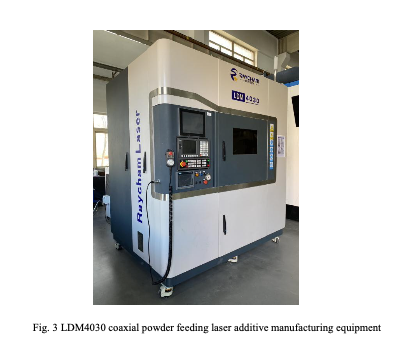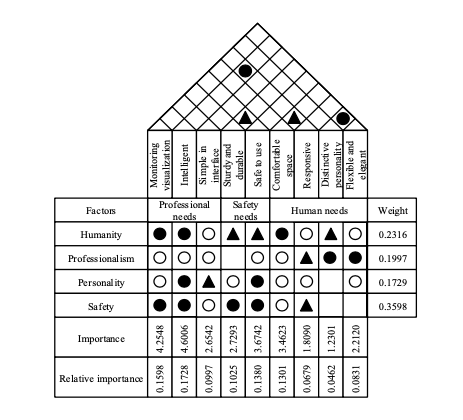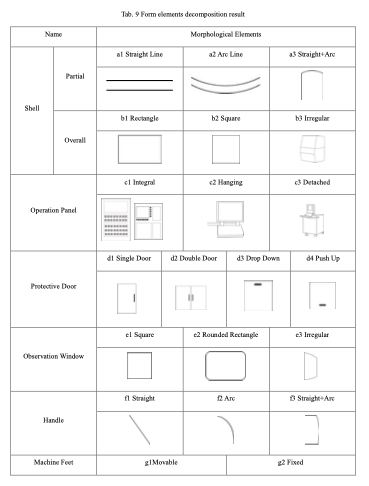How Satisfying is Your 3D Printer? Researchers Improve Operator “Emotional Fusion” to 3D Printing Equipment
Researchers from the School of Mechanical Engineering at Shenyang University of Technology in China think that the emotional relationship between laser powder bed fusion (LPBF) 3D printers and their operators could be improved. To do so, they are exploring the application of Kansei engineering and axiomatic design (Kansei-AD) to the design of PBF machines. The goal is, according to the team, is to “meet the psychological and emotional needs of personnel.”
Kansei engineering (or “affective engineering”) is a concept developed by Mitsuo Nagamachi, Professor Emeritus of Hiroshima University, that ties a consumer’s emotions to a product or service. In a paper titled, “Emotional Fusion and Design Optimization Method Based on Kansei-AD: A Case Study of Laser Additive Manufacturing Equipment (PDF),” the authors write that most LPBF machines “only meets the interaction requirements at the functional cognitive level” for operators. In turn, this has led to such problems as “humanization and poor comfort,” the authors write, which also negatively impacts overall efficiency.
To address this problem, the team first needs to determine the emotional and psychological needs of machine operators, which they propose to do using Kansei engineering semantic experiments. This requires creating a “Kansei vocabulary” based on adjectives that describe the design of LPBF machines and finding pictures that represent this vocabulary.
This is followed by a questionnaire in which those in the industry rate adjective pairs and images. The results are then analyzed using statistical software to extract common factors and determine the overall cognition of personnel. Once this has been executed, according to the authors, it’s possible to translate emotional needs into design features by “establishing the connection between the semantic space and the representative product.”
The authors applied this approach to the LDM4030 coaxial powder feeding LPBF 3D printer and determined how it could be redesigned to optimize the emotional relationship between the operators and the system. The team collected 70 adjectives that described the equipment via the internet, magazines and newspapers before researchers and operators analyzed the vocabulary to winnow the number down to 15 adjectives and 12 representative pictures. Operators, researchers, teachers and students were then surveyed to score pairs of adjectives.
Safety was determined to be the most important factor, followed by a humanity, professionalism and personality. Important design requirements included: “intelligence, monitoring visualization, safety in use and space comfort. The “morphological elements of current common laser additive manufacturing equipment” were then judged by six experts in the field to determine “the closeness of each morphological element to the positive and negative ideal solutions.”
Finally, the researchers whipped up two designs meant to satisfy the psychological and emotional needs of personnel. It was determined that the machine should have a square shell with straight and arc lines. The double-opening protective door features a rounded rectangular observation window and handles made up of straight and arc lines. The machine also has movable feet.
From the subjective point of view of this author, it’s difficult to determine if the final designs are emotionally or psychologically satisfying. But, I supposed that this is what you get when you break down subjective human needs into some adjectives, stick them into a statistical analysis program, and then convert those into design features. Then again, I am not a machine operator and, if I were, I would opt for more pay and a nice view to improve my emotional and psychological well-being.
Subscribe to Our Email Newsletter
Stay up-to-date on all the latest news from the 3D printing industry and receive information and offers from third party vendors.
You May Also Like
Further Understanding of 3D Printing Design at ADDITIV Design World
ADDITIV is back once again! This time, the virtual platform for additive manufacturing will be holding the first-ever edition of ADDITIV Design World on May 23rd from 9:00 AM –...
3D Printer Maker EVO-tech Reborn as NEVO3D — Once More With Feeling
EVO-tech was a 3D printing service and original equipment manufacturer established in 2013 and based in Schörfling am Attersee, Austria. The company produced high-quality material extrusion systems featuring linear bearings,...
3D Systems Brings 3D Printed PEEK Cranial Implant to the U.S. with FDA Clearance
For more than 10 years, 3D Systems (NYSE:DDD) has worked hand-in-hand with surgeons to plan over 150,000 patient-specific cases, and develop more than two million instruments and implants from its...
CDFAM Returns to Berlin for Second Annual Symposium
The second CDFAM Computational Design Symposium is scheduled for May 7-8, 2024, in Berlin, and will convene leading experts in computational design across all scales. Building upon the first event...





































